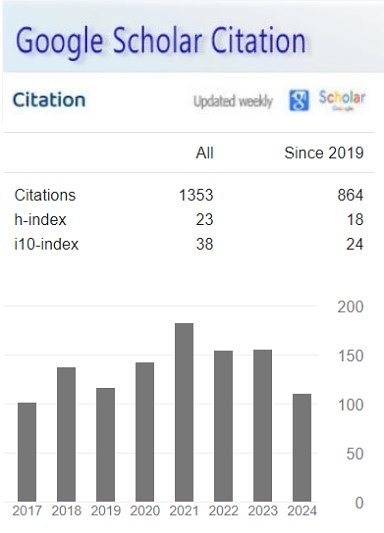Morgellons Disease and Its Association with Spirochetes and Lyme Disease
Keywords:
Abstract
Morgellons' pathophysiology is uncertain, threads ring, embed, or extend from the skin. Parasitism was traditionally considered a delusional illness. A Caucasian and female majority of 3.65 per 100,000 individuals in North California. Skin development, with or without cutaneous lesions, is a prominent symptom, affecting patients' health. Recent serological and clinical research tying Morgellons to Lyme corroborate its somatic nature. Borreliosis (Morgellons disease) causes skin sores in the hoof. Cattle with BDD have burgdoferi antigen reactivity. Lyme disease is spread by infected ticks. This inspired spirochete-Morgellons research. Fatigue, arthralgia, and neuropathy are Morgellons symptoms. The study revealed that it can be seen seed-like things or specks in lesions and healthy skin, as well as thin thread-like fibers in lesions and healthy skin. Morgellons illness causes filaments in hair follicle roots. They are cellular in nature, not textile in origin. Morgellons fibers have a crest that suggests they are vegetative spirochetes. Spirochetes can adapt and alter their shape. Borrelia can form a biofilm-like aggregation that is drug-resistant. If enlarged 50 times or more, they resemble textile strands.
References
Accordino RE, Engler D, Ginsburg IH, Koo J. Morgellons disease? Dermatologic Therapy. 2008;21(1):8–12. DOI: https://doi.org/10.1111/j.1529-8019.2008.00164.x
Driscoll MS, Rothe MJ, Grant-Kels JM, Hale MS. Delusional parasitosis: a dermatologic, psychiatric, and pharmacologic approach. J Am Acad Dermatol. 1993 Dec;29(6):1023–33. DOI: https://doi.org/10.1016/0190-9622(93)70284-Z
Lyell A. Delusions of parasitosis. J Am Acad Dermatol. 1983 Jun;8(6):895–7. DOI: https://doi.org/10.1016/S0190-9622(83)80024-3
Pearson ML, Selby JV, Katz KA, Cantrell V, Braden CR, Parise ME, et al. Clinical, Epidemiologic, Histopathologic and Molecular Features of an Unexplained Dermopathy. PLoS One. 2012 Jan 25;7(1):e29908. DOI: https://doi.org/10.1371/journal.pone.0029908
Middelveen MJ, Burugu D, Poruri A, Burke J, Mayne PJ, Sapi E, et al. Association of spirochetal infection with Morgellons disease. F1000Res. 2013 Jan 28;2:25. DOI: https://doi.org/10.12688/f1000research.2-25.v1
Middelveen MJ, Bandoski C, Burke J, Sapi E, Filush KR, Wang Y, et al. Exploring the association between Morgellons disease and Lyme disease: identification of Borrelia burgdorferi in Morgellons disease patients. BMC Dermatol. 2015 Feb 12;15(1):1. DOI: https://doi.org/10.1186/s12895-015-0023-0
Middelveen MJ, Stricker RB. Filament formation associated with spirochetal infection: a comparative approach to Morgellons disease. Clin Cosmet Investig Dermatol. 2011 Nov 14;4:167–77. DOI: https://doi.org/10.2147/CCID.S26183
Savely VR, Stricker RB. Morgellons disease: Analysis of a population with clinically confirmed microscopic subcutaneous fibers of unknown etiology. Clin Cosmet Investig Dermatol. 2010 May 13;3:67–78. DOI: https://doi.org/10.2147/CCID.S9520
Rudenko N, Golovchenko M, Kybicova K, Vancova M. Metamorphoses of Lyme disease spirochetes: phenomenon of Borrelia persisters. Parasites & Vectors. 2019 May 16;12(1):237. DOI: https://doi.org/10.1186/s13071-019-3495-7
Middelveen MJ, Fesler MC, Stricker RB. History of Morgellons disease: from delusion to definition. Clin Cosmet Investig Dermatol. 2018 Feb 9;11:71–90. DOI: https://doi.org/10.2147/CCID.S152343
Chu C. Morgellons Disease—Dredged Up From History and Customized. JAMA Dermatology. 2018 Apr 1;154(4):451–451. DOI: https://doi.org/10.1001/jamadermatol.2017.6393
Kellett CE. Sir Thomas Browne and the Disease Called the Morgellons. Ann Med Hist. 1935 Sep;7(5):467–79.
Harvey WT, Bransfield RC, Mercer DE, Wright AJ, Ricchi RM, Leitao MM. Morgellons disease, illuminating an undefined illness: a case series. J Med Case Reports. 2009 Jul 1;3:8243. DOI: https://doi.org/10.4076/1752-1947-3-8243
Fesler MC, Middelveen MJ, Stricker RB. Clinical evaluation of Morgellons disease in a cohort of North American patients. Dermatology Reports [Internet]. 2018 Apr 24 [cited 2021 Aug 9];10(1). Available from: https://www.pagepress.org/journals/index.php/dr/article/view/7660 DOI: https://doi.org/10.4081/dr.2018.7660
Ohn J, Park SY, Moon J, Choe YS, Kim KH. Morgellons Disease. Ann Dermatol. 2017 Apr;29(2):223–5. DOI: https://doi.org/10.5021/ad.2017.29.2.223
Middelveen MJ, Martinez RM, Fesler MC, Sapi E, Burke J, Shah JS, et al. Classification and Staging of Morgellons Disease: Lessons from Syphilis. CCID. 2020 Feb 7;13:145–64. DOI: https://doi.org/10.2147/CCID.S239840
Mayne P, English JS, Kilbane EJ, Burke JM, Middelveen MJ, Stricker RB. Morgellons: a novel dermatological perspective as the multisystem infective disease borreliosis. F1000Res. 2013 May 1;2:118. DOI: https://doi.org/10.12688/f1000research.2-118.v1
Downloads
Published
How to Cite
Issue
Section
License
Copyright (c) 2021 Asian Journal of Applied Science and Engineering

This work is licensed under a Creative Commons Attribution-NonCommercial 4.0 International License.








